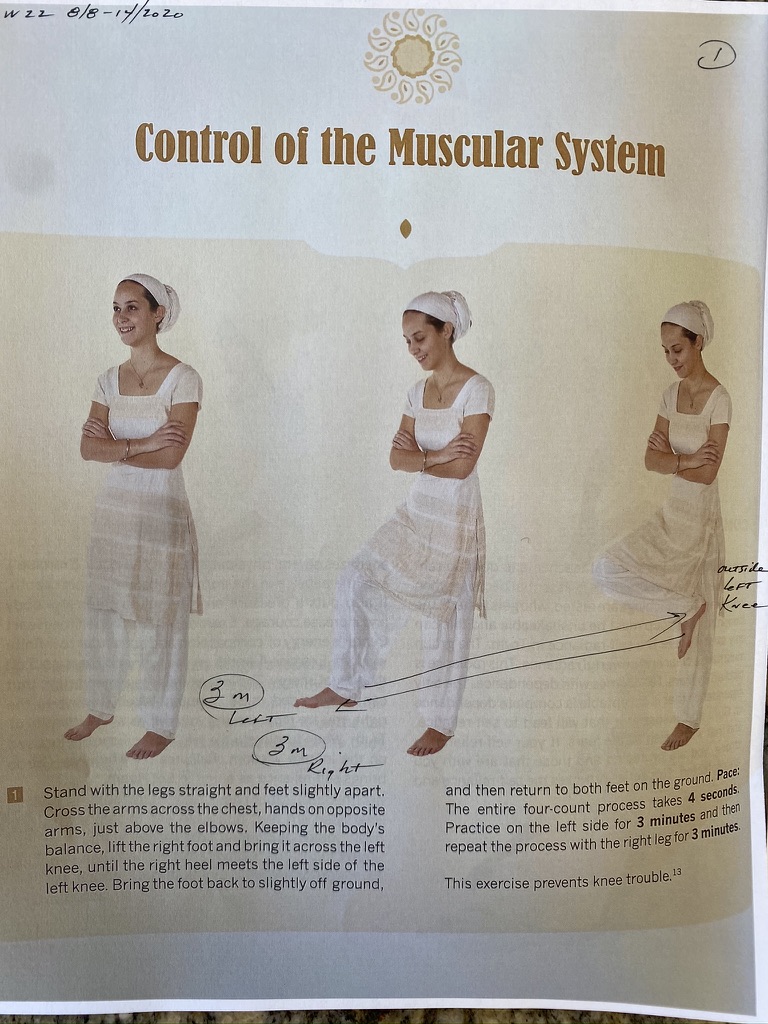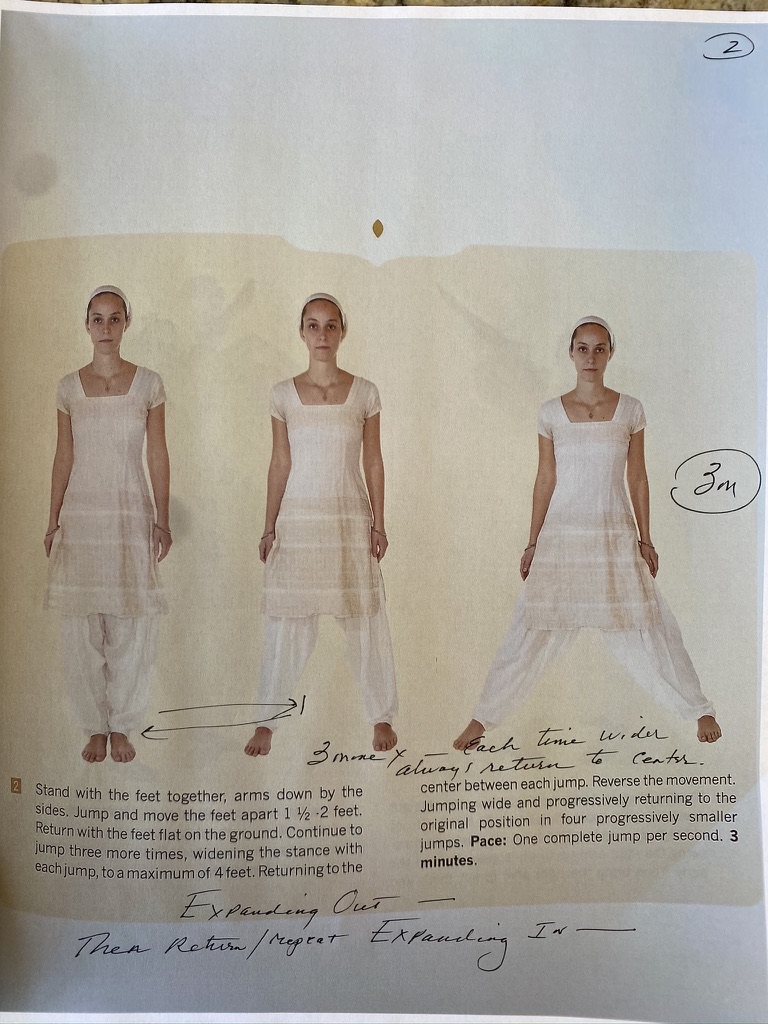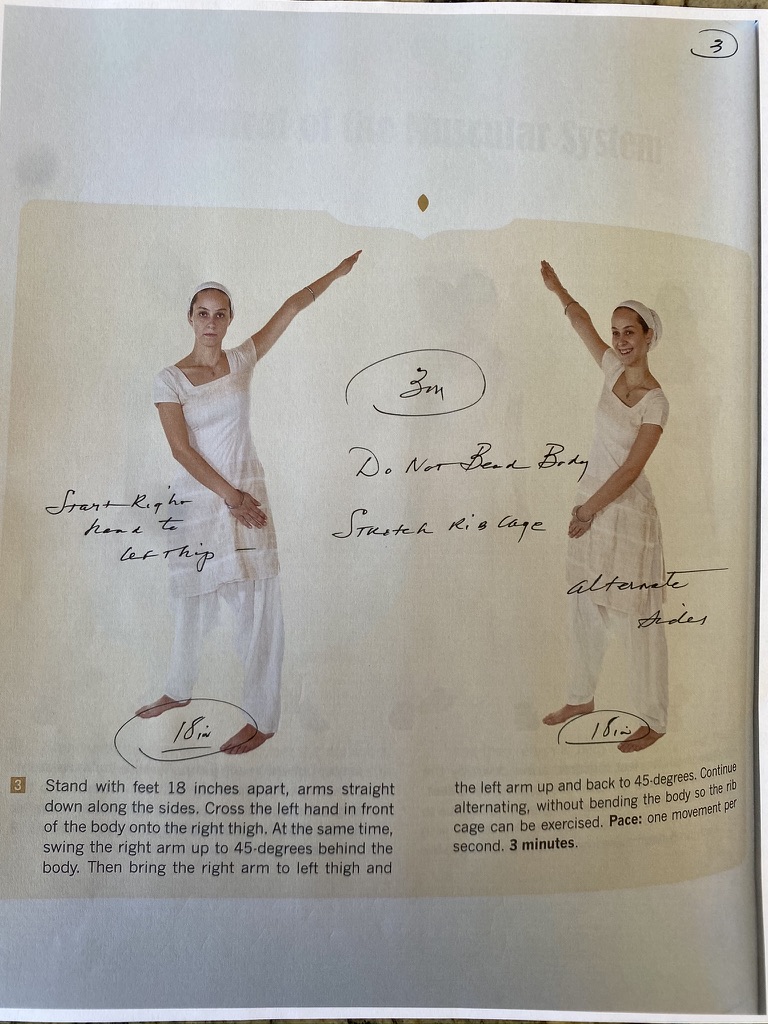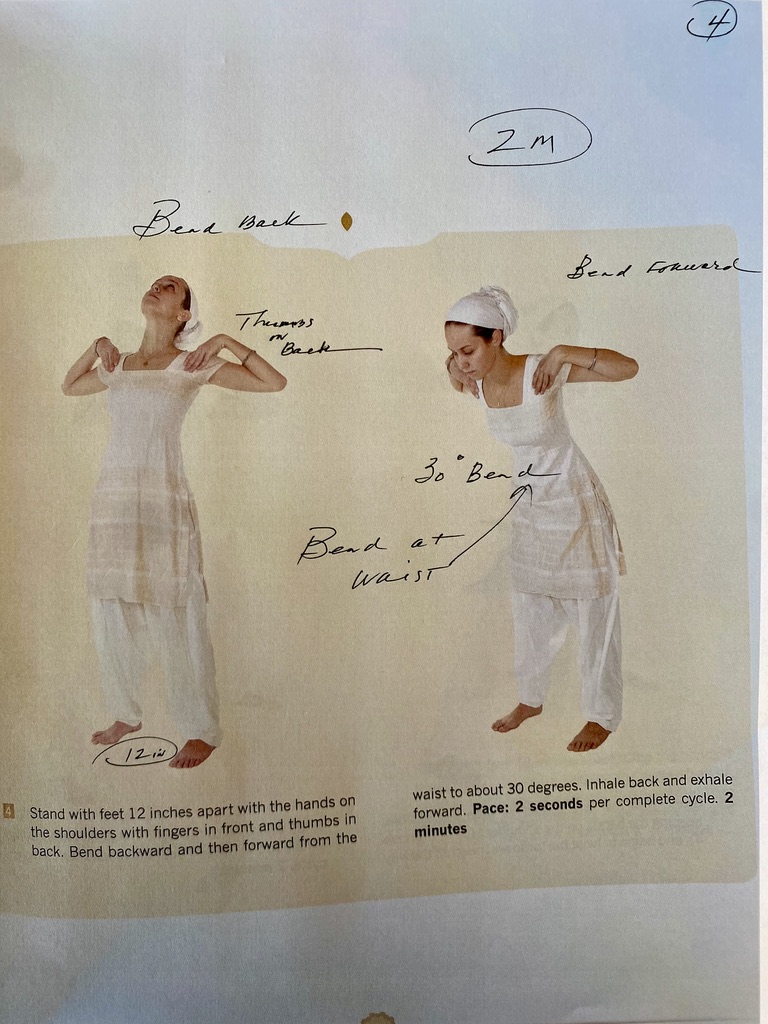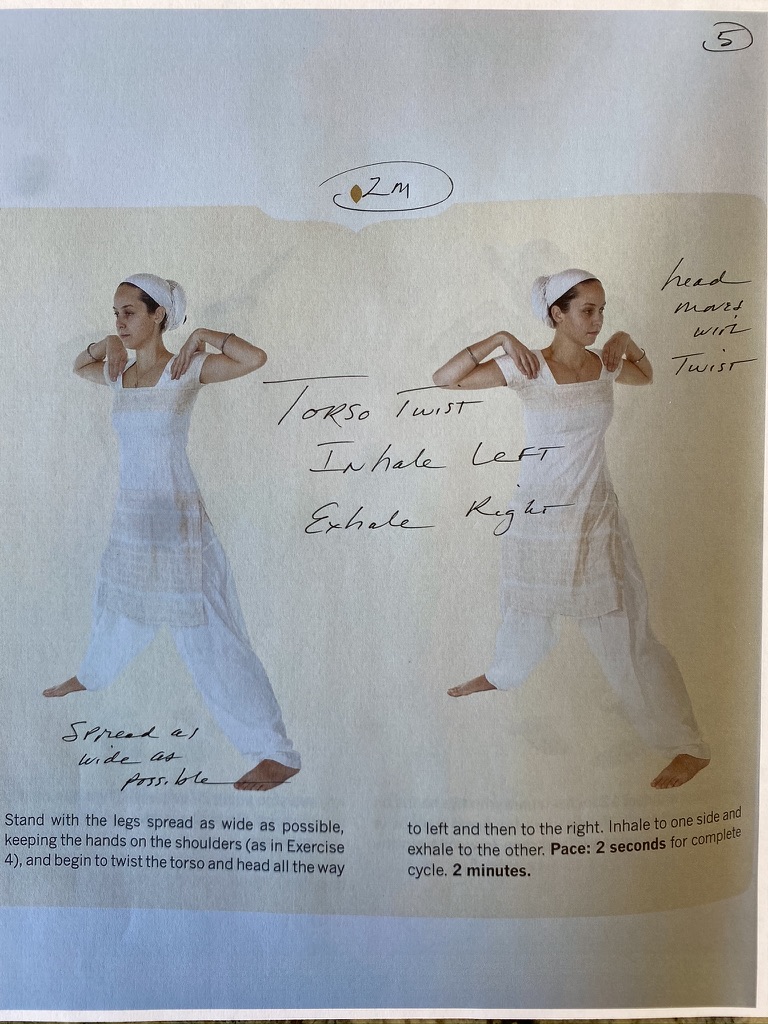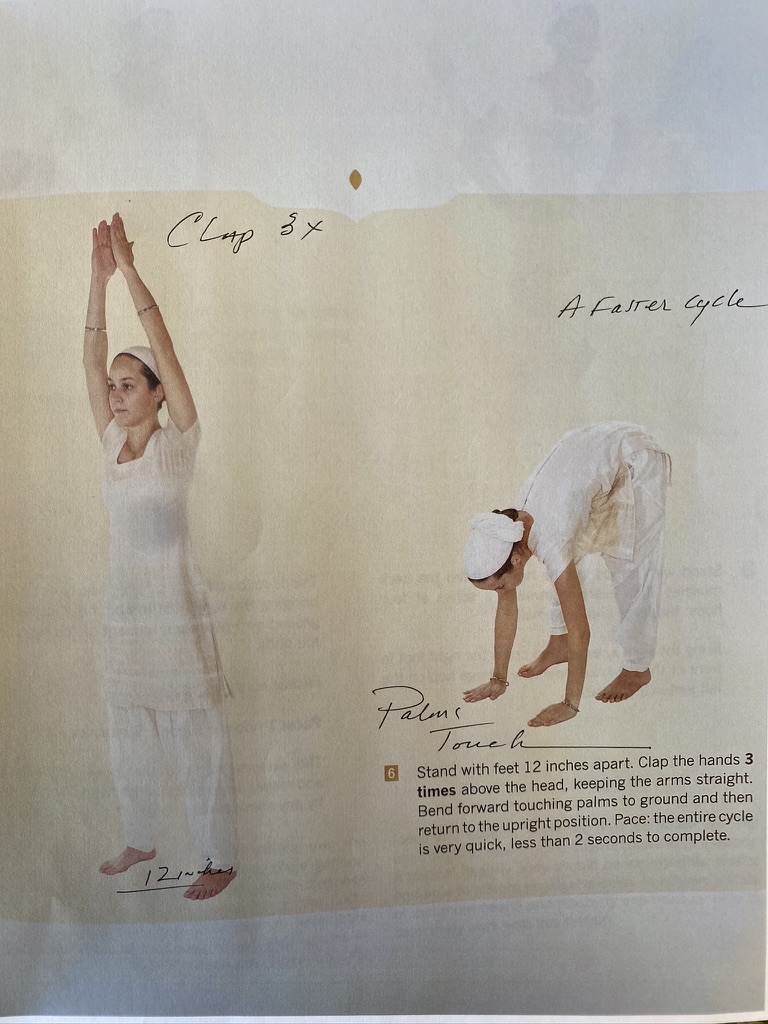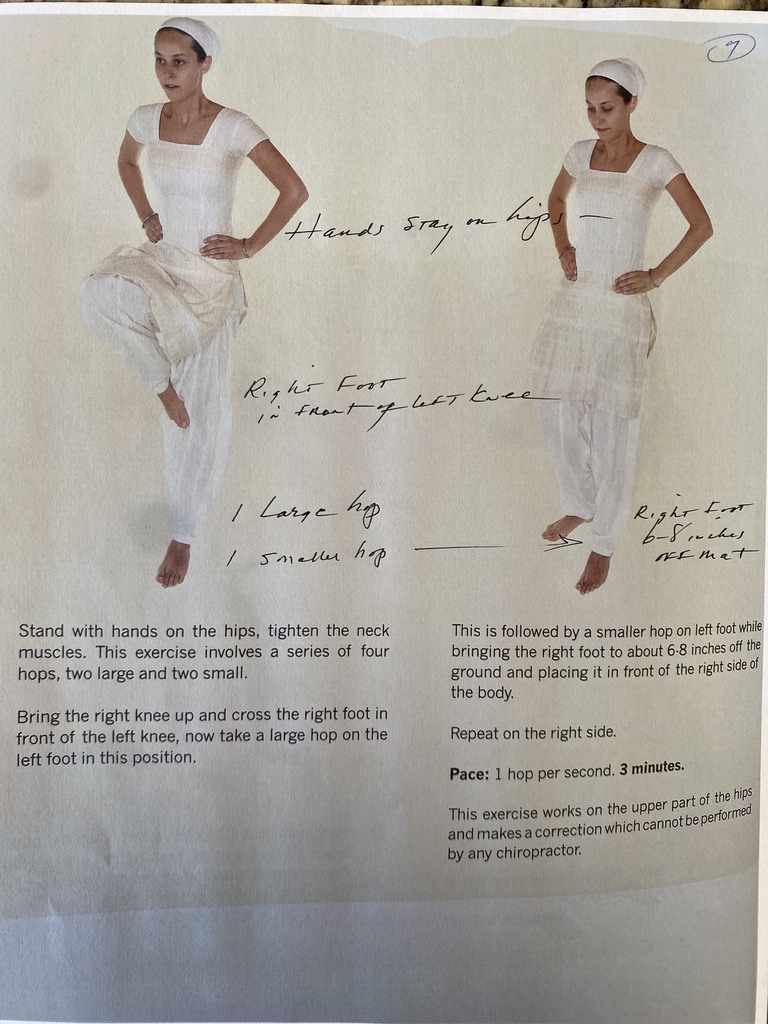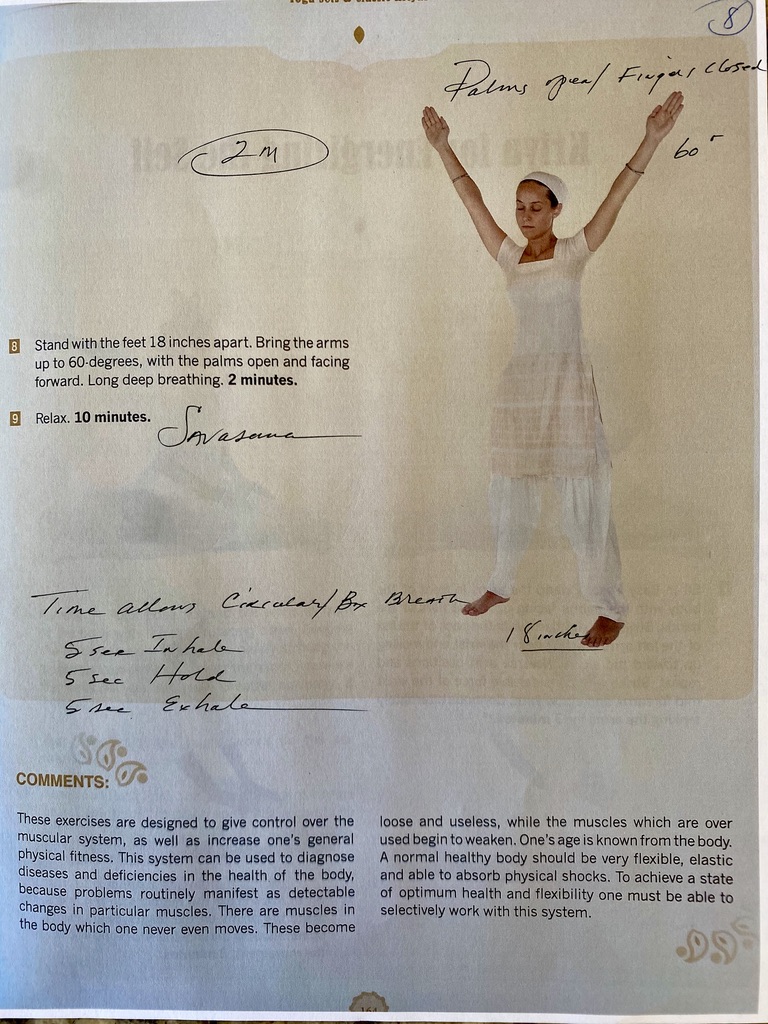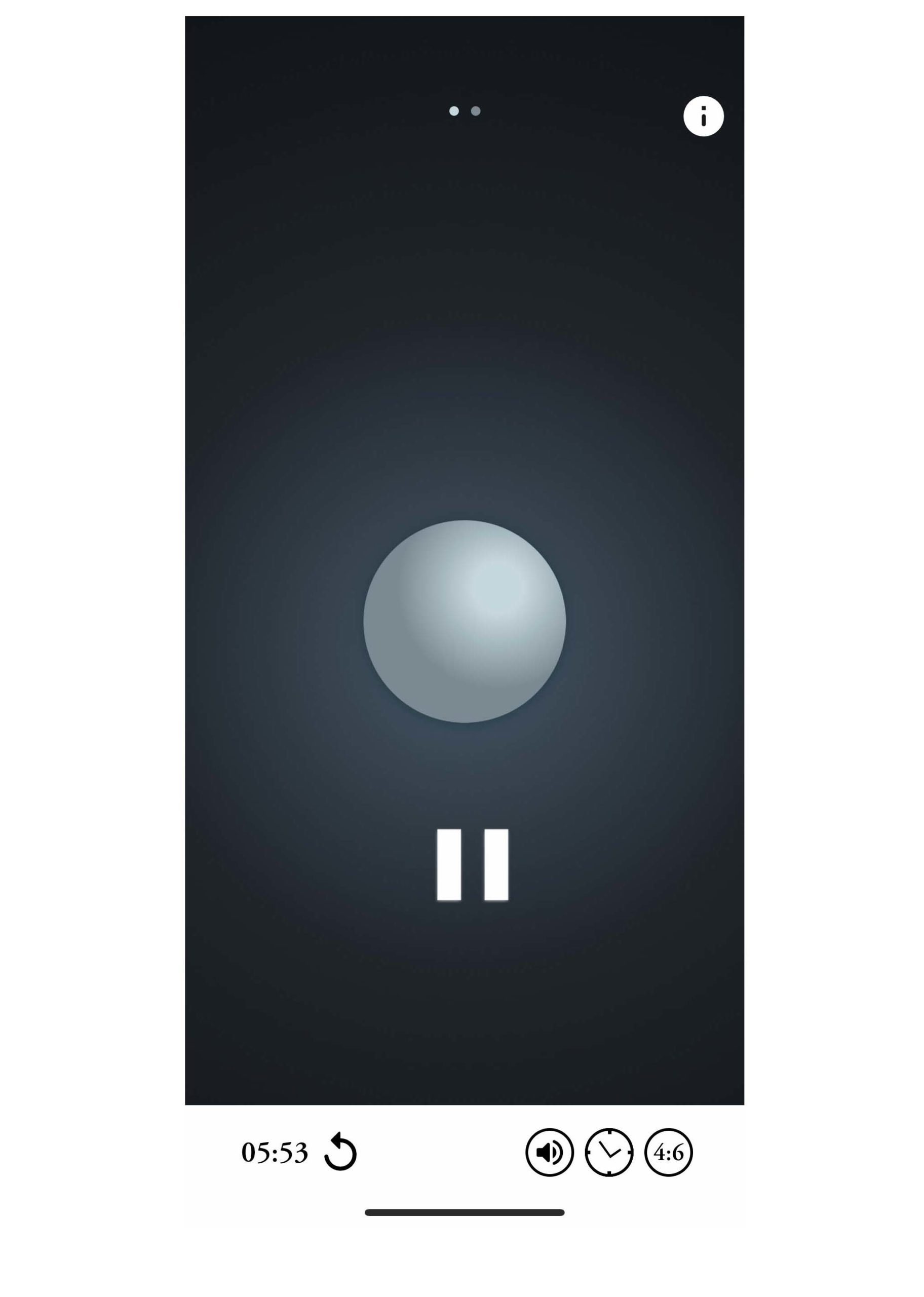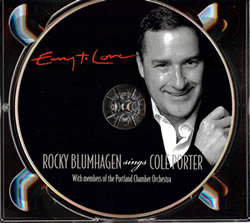Week #43 – January 5-13, 2021
Kriya for Control of the Muscular System
Overview
WEEK 43 – Kriya for the Control of the Muscular System
This Kriya is performed standing and is created to use and balance underused quad and hamstring muscles and especially your abductor and adductor muscles running vertically on the outside and insides of your thigh muscles. I felt the work of this sequence in both my adductors and abductors. Soreness can be good at any age, the breaking down and rebuilding of muscles is called hypertrophy. This is also a real work out for the hips.
After the first day of practicing this Kriya your neural muscular system will kick in and you will find balancing on one foot and one leg much easier.
Remember – If you are on your Moon/Menstrual cycle no held breath, substitute with long and deep breathing.
CHANTS in this Kriya include:
SONGS & MUSIC in this Kriya include:
There is no music in this kriya other than our closing song. If you prefer to practice without music, you will appreciate this recording.
PRANAYAMA – BREATHING in this Kriya includes:
ROCKY’S TAKEAWAY
Kriya for the Control of the Muscular System
This is the second time we have practiced this kriya. It really does work on balance and strengthening the hips. As the week progressed I realized how subtle the Kriya is: forcing us to use muscles we don’t traditionally use. If you would like to change it up and go for a standing Kriya: try this one out!
Sat Nam.

